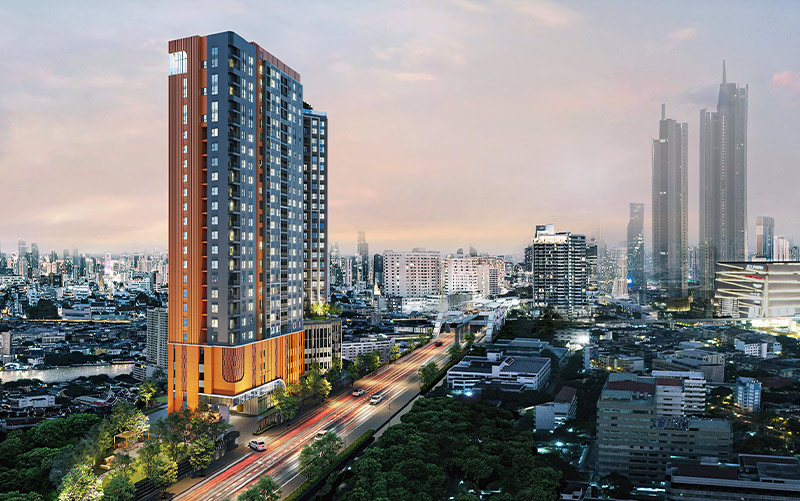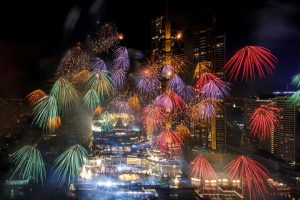What $150,000 Buys you for a 2 Bedroom Condo in Bangkok
 Aspire Sukhumvit 48 is a high-end residential building located in the heart of Bangkok. This 62 sqm unit is on the 10th floor and has a view overlooking the city. Aspire Sukhumvit 48 is the perfect place to live for anyone looking for a comfortable and convenient lifestyle in the heart of Bangkok (that guy). The building features luxurious apartments and penthouses, as well as a wide range of amenities, including a full-service gym, an outdoor swimming pool, and a spa. It offers you a unique living experience, with easy access to all the city has to offer. The building is also conveniently located close to a variety of shopping malls, restaurants, and entertainment venues.
Aspire Sukhumvit 48 is a high-end residential building located in the heart of Bangkok. This 62 sqm unit is on the 10th floor and has a view overlooking the city. Aspire Sukhumvit 48 is the perfect place to live for anyone looking for a comfortable and convenient lifestyle in the heart of Bangkok (that guy). The building features luxurious apartments and penthouses, as well as a wide range of amenities, including a full-service gym, an outdoor swimming pool, and a spa. It offers you a unique living experience, with easy access to all the city has to offer. The building is also conveniently located close to a variety of shopping malls, restaurants, and entertainment venues.
This is a great place to live for those who want to experience the hustle and bustle of the city, while still having the comforts of home. It offers stunning views of the city and its surrounding areas, as well as easy access to the city’s best shopping, dining, and entertainment. This property is a 70SqM. condo with 2 bedrooms and has a city view. Lumphini Place Water Cliff is a luxurious condominium located in the heart of Bangkok. This prime location is also close to the BTS Skytrain and MRT Subway systems, making it easy to get around the city.
The straight eight was little changed through 1936, variously sold in Standard, DeLuxe, and Custom series. Output then rose to average 100,000 units per year in 1935-37, but that was good for only eighth — and Terraplane still garnered the lion’s share of sales. A reduced 1935-36 market share suggests Hudson was late in shifting to the popular “potato look.” Though the firm managed 85,000 units and fifth place for 1934, some two-thirds were low-priced Terraplanes. For ’35 came a new six: a 212.1-cid unit that made 93 bhp through 1936, then 101/107. The 1937-38 Eights delivered 122/128 bhp.
Displacement was increased each year: first to 233.7 cid and 87 bhp, then to 254 cid and 101 bhp. It was an attractive line that would have done justice to far-costlier brands, but it wasn’t successful. Through 1933, Hudson Eights offered numerous body styles on wheelbases of 119-132 inches: roadsters, Victorias, convertibles, sedans, town sedans, coupes, and Broughams (two-door sedans). The company thus turned to Murray and Briggs for phaeton and speedster bodies. A few eight-cylinder Hudsons of this period also sported dashing coachwork by the renowned firm LeBaron. Another 1930 setback was the Depression-related closure of Biddle and Smart, Hudson’s longtime supplier of magnificent open bodies.
Hudson’s contributions to winning World War II included “Helldiver” aircraft, “Invader” landing-craft engines, sections for B-29 bombers and Aircobra helicopters, and a variety of naval munitions. The company made small wartime profits, then quickly resumed production after V-J Day. Like most other Detroit cars, the 1946-47 Hudsons were just ’42s with new wrinkles — mainly a less-elegant front sans prow. However, the small 175-cid six was forgotten, and a vastly simplified lineup offered fewer models spread among Super and Commodore Six and Eight, all on a 121-inch chassis. A total of 4735 cars put Hudson fifth for calendar 1945, a spot it hadn’t held since 1934 — and would not hold again.
With only a small 175-cid six making just 83 bhp, the 112 was sluggish next to the speedy 96-bhp Terraplane: 35 seconds 0-60 mph, top speed barely 70 mph. An unchanged eight was reserved for a single Custom line. The 212 Terraplane engine also powered that year’s Custom Six, again tuned for 101/107 bhp. But it returned up to 24 mpg and was attractively priced as low as $700. The national economy was looking up by 1939, when Hudson dropped Terraplane, trimmed the 112 to a single DeLuxe series, and unveiled new 101-bhp Pacemaker and Country Club Sixes on respective wheelbases of 118 and 122 inches.


